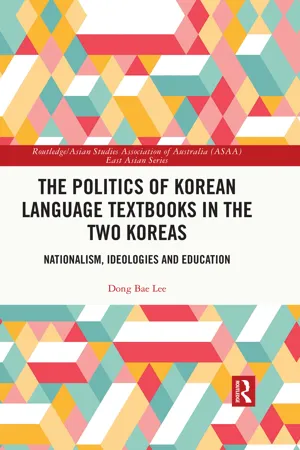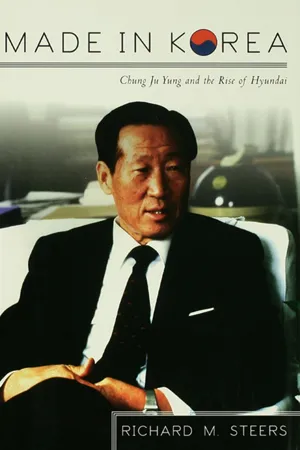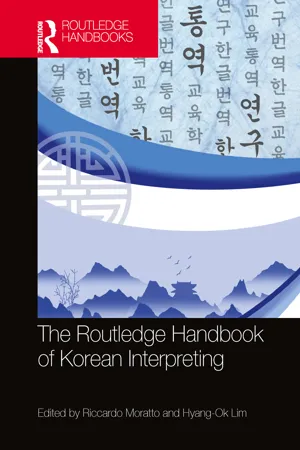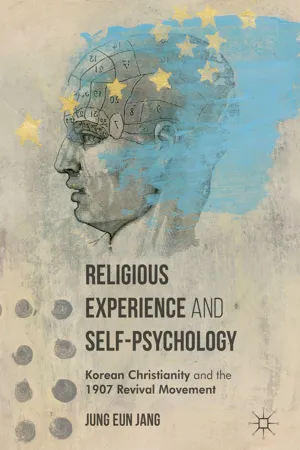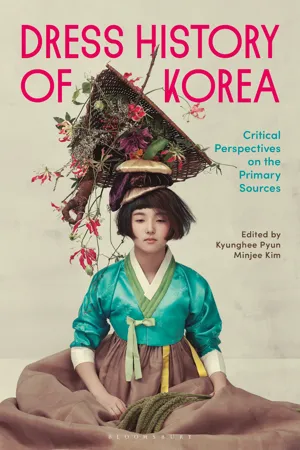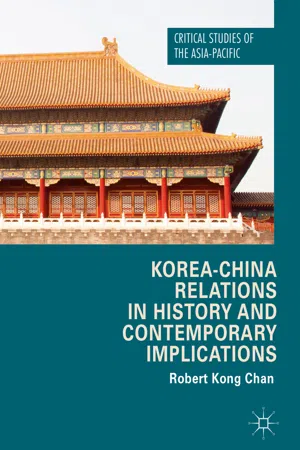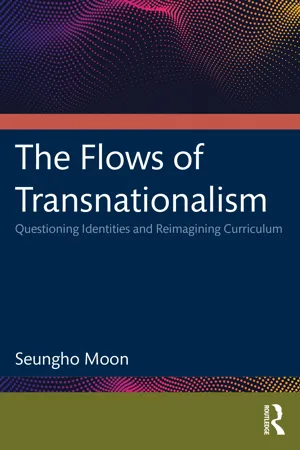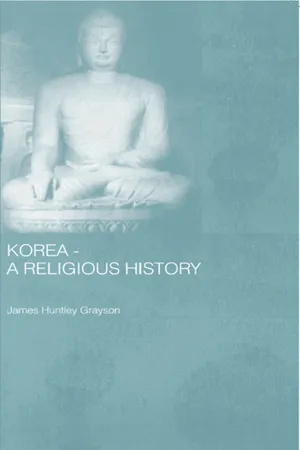History
Joseon Dynasty
The Joseon Dynasty was a Korean dynastic kingdom that lasted for over five centuries, from 1392 to 1897. It was founded by King Taejo and is known for its Confucian-based governance, cultural achievements, and the development of the Korean alphabet, Hangul. The dynasty also saw significant social and economic reforms, as well as periods of conflict and foreign invasions.
Written by Perlego with AI-assistance
9 Key excerpts on "Joseon Dynasty"
- eBook - ePub
The Politics of Korean Language Textbooks in the Two Koreas
Nationalism, Ideologies and Education
- Dong Bae Lee(Author)
- 2023(Publication Date)
- Routledge(Publisher)
The textbooks briefly introduced Korean history, historical figures, and the origin of the Korean nation state. Subsequently, I analyze some units from these books, under three headings: the greatness of Korean history, historical figures, and independence.Greatness of Korean history and national heroes
Page 9 in “Great country Joseon,” from Gukminsohakdokbon gwon 1 (1895a ), portrayed Joseon as being one of the great and independent nations in Asia. The story also stressed the pre-eminence of Korean history. The long sequence of kingdoms, from the first kingdom, Dangun Joseon, through Kija, Wiman Joseon, Samhan, Silla, Baekje, Goguryeo, and Goryeo were introduced. The story highlighted the Joseon Dynasty founded by Taejo (Yi Seong-gye), which held power continuously for about 500 years.Here the author depicted the founder of the first Korean kingdom, Dangun, who established his kingdom, Joseon (or Gojoseon3 ), in 2333 BCE, and who was succeeded by Kija and Wiman Joseon, who ruled until 108 BCE. Yunyeonpildok gwon 1 (1907a ) also explained that Dangun established the capital city of his kingdom in Pyongyang (p. 18), 4239 years ago. Three textbooks (Yunyeonpildok, Godeungsohakdokbon and Gukminsohakdokbon) commonly explained that the history of Korea traces back more than 4,000 years to the time when Dangun’s kingdom was founded. Yunyeonpildok also depicted the capitals of important Korean dynasties, such as Pyongyang, Gyeongju, Kaeseong, and Hanyang. Hyun Chai, the author of Yunyeonpildok, included a detailed description of Pyongyang and added that the Korean state was much older than (and was superior to) the imperialist countries, such as Japan and America. On page 7, Godeungsohakdokbon gwon 1 (1906) depicted Taejo (Yi Seong-gye), the founder of Joseon, as emperor, not as king, a title which had been prohibited in Joseon. However, the textbook used the title Emperor because the power of China was declining at that time. The same page also stressed that Joseon was number one among countries in the East in terms of civilization and morality because Gojoseon had eight articles of law, indicating that Gojoseon had an excellent legal system that was far ahead of other countries. The three textbooks (i.e., all except for Sinjeongsimsangsohak - eBook - ePub
- (Author)
- 2019(Publication Date)
- Lonely Planet(Publisher)
sadae (serving the great). Because of this special relationship, when Japan attacked in the 1590s, Chinese troops were sent to help repel them. In just one battle, as many as 30,000 Chinese soldiers died.It isn’t clear what the common people thought about China until the modern period, nor were they asked. The vast majority were illiterate in a country that marked its elite according to their literacy – in Chinese. The aristocrats were enthusiastic Confucianists, adopting Chinese painting, poetry, music, statecraft and philosophy. The complicated Chinese script was used for virtually all government and cultural activities throughout the Joseon period, even though the native alphabet, hangeul, was an outstanding cultural achievement and possessed astonishing versatility.Chihwaseon (2002), which won a prize for director Im Kwon-taek at Cannes, is a visually stunning film based on the true story of a talented, nonconformist painter who lived at the end of the Joseon Dynasty.Royal Pomp & Ceremony
Many of the premier cultural attractions in Korea today, such as Seoul’s palaces, are imperial relics of the long-lived Joseon Dynasty. They are windows into a time in Korea’s history when absolute monarchs ruled. Pomp and ritual became an essential aspect of royal power, with attention to ritual and protocol developed into an art form. Koreans appeared to break sharply with this royal system in the 20th century, but when you look at the ruling system in North Korea, or the families that run most of South Korea’s major corporations, you can see the family and hereditary principles of the old system continuing in modern form.In these more democratic times it is difficult to imagine the wealth, power and status of Joseon kings. The main palace, Gyeongbokgung (경복궁 ), contained 800 buildings and more than 200 gates – in 1900, for example, palace costs accounted for 10% of all government expenditures. In the royal household were 400 eunuchs, 500 ladies-in-waiting, 800 other court ladies and 70 gisaeng - eBook - ePub
Made in Korea
Chung Ju Yung and the Rise of Hyundai
- Richard M. Steers(Author)
- 2013(Publication Date)
- Routledge(Publisher)
koryo (“ko-ree-o”).CHOSON AND THE SEJONG RENAISSANCEAs is typical of most dynastic shifts, a period of war and rebellion preceded the emergence of the new Yi dynasty. A Mongol invasion and accompanying civil unrest led to the emergence of General Yi Song-gye, who first reestablished order and then proceeded to overthrow the last remnants of the Koryo dynasty and establish his own. The new ruler promptly resumed diplomatic and tributary relations with Ming China and took the ancient Chinese name for Korea, Choson, meaning “Land of the Morning Calm.” Because of this, the Yi dynasty is also referred to as the Choson dynasty. To solidify control over his empire, Yi built a new walled capital city in the center of his kingdom in an area surrounded by high mountains that provided a natural defense against outside attacks. The new city was called Seoul.Despite its militaristic origins, the Yi dynasty was marked by further cultural and economic developments. A noteworthy period of this era was that of King Sejong in the first half of the fifteenth century. King Sejong was born in 1397 and ruled Korea from 1418 to 1450. During his reign, he oversaw the development of many progressive ideas in administration, linguistics, music, science, and humanistic studies. He established the Hall of Talented Scholars (Chiphyonjon) to promote research in institutional traditions, politics, and economics. In 1443, he developed a new Korean alphabet, known as hangul, as a way to reflect the Korean language accurately in writing. Heretofore, Korean sounds had been forced awkwardly into traditional Chinese characters, even though Chinese was based on an entirely different linguistic system. Sejong intended this new alphabet to be used to educate the populace to read and write. Indeed, the first manuscript describing the alphabet (in 1446) was called “Correct Sounds to Teach the People” (Hunmin Chong-um - eBook - ePub
- Riccardo Moratto, Hyang-Ok Lim, Riccardo Moratto, Hyang-Ok Lim, Riccardo Moratto, Hyang-Ok Lim(Authors)
- 2023(Publication Date)
- Routledge(Publisher)
gyorin to maintain amicable relations with neighbors viz. the Japanese, Mongolians, and Jurchen. Based on the Sinitic world order, sending tributes to the Ming dynasty and receiving rewards from China were the customary honorable means of diplomacy and trade with the Chinese Ming empire. (Ir-)Regular envoys were dispatched and received. An official diplomatic relationship with Japan was established in the early fifteenth century, but diplomatic relations with China were accorded greater importance.Following roughly a decade of Japanese invasions (1592, 1597–1598), relationships with the Tokugawa shogunate (1603–1868) in Japan were incrementally cultivated in the seventeenth century. When the Manchus came to power and founded a new empire in China, the newly founded Qing dynasty forced Joseon to enter into a new relationship with them (Manchu invasions of 1627 and 1636). Within the Joseon court, there was resistance and reluctance to accept the Qing dynasty as equivalent to the Ming. The Joseon elite yangban bureaucrats and court members considered themselves true successors of the Sinitic world order. However, they were forced to accept the real power of the Qing, although the Joseon court initially did not welcome diplomatic relationships with the new dynasty. In this situation, technical staff of diplomatic affairs, yeokgwan, were practically given charge of handling of envoys to and from the Qing, including trade matters. In the Joseon Dynasty, where literature and rituals were valued, the chungin middle-class, skilled technicians did not enjoy a high status in court, and promotion to and above the upper third-grade was systematically limited. Court members above the upper-third-grade enjoyed special privileges, like attending meetings with the king where state affairs were discussed and decided. Some interpreter families amassed great wealth through trade activities and the resources they acquired while working in diplomacy and trade (Kim, 2003 - eBook - ePub
Religious Experience and Self-Psychology
Korean Christianity and the 1907 Revival Movement
- Jung Eun Jang(Author)
- 2016(Publication Date)
- Palgrave Macmillan(Publisher)
Joseon Jujahak was a significant selfobject to the Korean group self, sustaining the image of its self-worth and a sense of self-cohesion in the early years of the Joseon Dynasty. However, it gradually began to fail to sustain and mirror its selfobject needs due to the disruption of the peasant economy and the political system that supported the Confucian society, and the changing international circumstances in the latter part of the Joseon Dynasty. Consequently, the Korean group self gradually began to be devaluated because of the loss of the selfobjects in the late Joseon period. However, the disruption in the sense of self reached its peak in the late nineteenth and early twentieth century, when Joseon started to lose its sovereignty, and the country and its people were exploited by foreign forces and corrupt officials.1 The Selfobject Functions of the Political, Social, and Religious Systems of the Joseon Dynasty
The section examines the selfobject functions of the political, social, and religious systems of the Joseon Dynasty as a first step to study the self-psychological implications of the 1907 Korean Revival Movement. Given that the Joseon Dynasty was founded essentially upon a hierarchical structure based on Confucianism, the task is closely connected to an examination of the selfobject functions of the Joseon Dynasty’s hierarchical society and Confucianism for the Korean group self.From its earliest era in the fourteenth century, the Joseon society was based on a hierarchical social system in which the dominating class, known as the yangban , strictly controlled the village societies. However, it is important to note that the hierarchical society was able to provide a system of moral ideals and mutual aid for people who performed idealizing and mirroring selfobject functions. In the early period of the Joseon Dynasty, the demographic composition of the social classes reflected a pyramid shape. The ruling group constituted a small fraction of the society. They possessed not only an ideal value system but also a sense of responsibility as the dominant group, which was derived from Confucianism.The main function of the Joseon village society was also to build up an organization that facilitated mutual cooperation. The ideal goal of the village society was to perform a mutual aid function of the organization, mobilizing and managing the resources for the relief of poor people in the villages, and not to merely create an efficient economic system to maximize profits. Joseon developed “a nonofficial, local, and autonomous social organization,” known as the Hyangyak , to educate the masses regarding the Confucian ways. The Hyangyak system emphasized on mutual relationships based upon Confucian teachings and facilitated a community-based spirit in the Korean villages where “the lives of the people depended upon the family, the clans, and communal mutual aids.”1 - eBook - ePub
Dress History of Korea
Critical Perspectives on Primary Sources
- Kyunghee Pyun, Minjee Kim, Kyunghee Pyun, Minjee Kim(Authors)
- 2023(Publication Date)
- Bloomsbury Visual Arts(Publisher)
3Late Joseon Scholarly Writings on Dress: Yi Sugwang, Yi Ik, and Jo Jaesam
Encyclopedic works (類書 , yuseo) provide a particularly abundant source of information about late Joseon dress. Previous Confucian scholarly discourse on clothing had focused primarily on garments required for court and household rituals such as ancestral veneration rites. Late Joseon encyclopedias, however, typically included a wide range of clothing-related articles on ritual, courtly, and everyday wear. Among the most influential of these, each containing significant entries on clothing, were Jibong yuseol (芝峰類說 , Topical Discourses of Jibong, 1614) by Yi Sugwang (1563–1628), Seongho saseol (星湖僿說 , Collected Works of Seongho, 1723) by Yi Ik (1681–1763), and Songnam jabji (松南雜識 , Miscellaneous Knowledge of Songnam, 1855) by Jo Jaesam (1808–66).4Like many late Joseon encyclopedias, Jibong yuseol includes separate entries for various garment forms, but also mentions clothing in discussions of other topics. The author categorizes and describes clothing and fabrics in articles on headwear (冠巾 ), clothing (衣服 ), royal court uniforms (朝章 ), and textile crafts (綵幣 ) in the chapter “Dress and Wares” (服用部 ); relates clothing-related conventions of the era in the article on customs (風俗 ) in the chapter “Various Countries” (諸國部 ); and mentions clothing anecdotally in the chapters “Public Administration” (官職部 ), “Human Behavior” (性行部 ), and “Human Affairs” (人事部 ). Each topic was bounded in scope by the personal interests, social position, and gender of the writer. In the article on hats, for instance, Yi Sugwang mentions several forms of headwear, but not gat (笠 ), the most common form of men’s hat for daily wear.5 For court attire, he primarily describes the clothing and accessories worn and treasured by government officials such as himself, including jobok (朝服 , court ensemble), poomdae (品帶 , rank belt), and hol (笏 , scepter).6 - Robert Kong Chan(Author)
- 2017(Publication Date)
- Palgrave Macmillan(Publisher)
33). At that time, China was popularly deemed the cultural center of East Asia, and many educated Koreans were drawn to the superiority of Chinese civilization—to Confucianism in particular. In constructivist terms, Confucianism became the intersubjective culture that was commonly shared by the Chinese and the Koreans. Fundamentally, it was their faith in Confucianism that helped the Koreans accept the existence of a Sinic world and the identity of a vassal state accorded to Joseon in the hierarchical Sinocentric order. To obtain a higher ranking of their national status, the Koreans were motivated to Sinicize themselves—they voluntarily and actively studied Chinese culture and emulated Chinese practices (Kang 2010, pp. 33–7). The study of Chinese language and philosophy was therefore placed at the core of education in Joseon: Chinese literatures and the philosophical canons of Confucianism became the textbooks in schools across the country. The Koreans not only absorbed the Confucian ideas and norms, they also developed political institutions by exactly replicating those in China, including the design of civil service examination and bureaucratic governance. Consequently, Joseon society was literally Confucianized, and Joseon achieved the highly regarded status of Sojunghwa (little China, 小中華), as the country closest to that of hegemonic China in the ‘civilization–barbarism’ Sinocentric order. A Confucianized Joseon society thus became the primary source to produce generations of Confucian political elites, who revered and accepted Confucianism as their state ideology. When they became the court officials responsible for making Joseon’s foreign policy, they chose to practice Sadae- Seungho Moon(Author)
- 2021(Publication Date)
- Routledge(Publisher)
The political leaders in the Joseon Dynasty were not able to defend themselves against this revolutionary uprising and requested that Chinese forces fight against the Korean peasants. Chinese involvement in Korean politics brought the Japanese military into the Korean peninsula and this political conflict caused the Sino-Japanese War (Kallander, 2013). According to Chung (2007), major sociopolitical trends shifted when the existing inequity dramatically increased between the feudal class and the peasant class. Peasants witnessed the growth of Catholicism and its message of everyone’s equal status under God. Kim (2004) assumes that Su-un must have been exposed to Matteo Ricci’s (1985) The True Meaning of the Lord of Heaven and extended this belief in equal humanity to his notion of Hannullim. It must be noted though that Su-un was openly against certain Catholic messages spread in the Joseon Dynasty in the 19th century (Kim, 2004). These external and internal pressures challenged the feudal Confucian hierarchy towards the end of the Joseon Dynasty. Donghak 's Ontology and Social Transformation While experiencing the influx of Western imperialism, including Catholicism, in the Korean peninsula, Su-un established a “liberation-oriented, and socially-transformative” (Chung, 2007, p. 27) religion and philosophy. In this section, I explain three major concepts Donghak posits in rethinking self-other via Shi-chun-ju (侍天主), self-cultivation by channeling a greater spirituality, Sushim-Junggi (守心正氣) which entails clarity of mind, and the social transformation of Gae-byeok (開闢). Previously, Han (2010) introduced these three concepts by analyzing Donghak ’s practical philosophy, drawing from religious, personal, and communal perspectives- eBook - ePub
- James H. Grayson(Author)
- 2013(Publication Date)
- Routledge(Publisher)
During the next hundred years, Silla was to attain the summit of its cultural and political development, which was never to be surpassed nor ever again to be attained. The zenith of Silla’s economic prosperity and cultural achievements were reached during the reign of King Kyŏngdŏk (r. 742–65). During the hundred-year period following unification, the finest works of stone sculpture, bronze casting, and temple architecture were created. The greatest of all these cultural achievements was unquestionably the magnificent Sokkur-am grotto on the outskirts of Kyŏngju. From the reign of Kyŏngdŏk’s successor King Hyegong (r. 765–80) onwards, Silla society entered into a long period of social decline typified by unceasing political strife. Wanne J. Joe has aptly said that the final period of Silla’s history was a record of the gradual loosening of the glue which had held together the various components of the social structure. 1 Until the middle of the eighth century, the kings of Silla had been able to enhance royal authority and the power of the central government according to Confucian principles. However, this process tended to increase the contradictions already present in Silla society, which had originally been organized along clan lines under aristocratic leadership. The centralized Confucian bureaucratic system was alien to this social system and created tensions at all levels of society. During the reign of Hyegong, a group of conservative aristocrats joined cause with a group of ninety-six clan chiefs who revolted against the central government. Social advances which had been made during the reign of King Kyŏngdŏk were rescinded during Hyegong’s reign in an attempt to appease these groups. This was unsuccessful, and dissension and rebellions continued to plague the land until the king himself was murdered in 780. At this point, two branches of the royal family emerged vying for power. King Sŏndŏk (r
Index pages curate the most relevant extracts from our library of academic textbooks. They’ve been created using an in-house natural language model (NLM), each adding context and meaning to key research topics.
Explore more topic indexes
Explore more topic indexes
1 of 6
Explore more topic indexes
1 of 4
